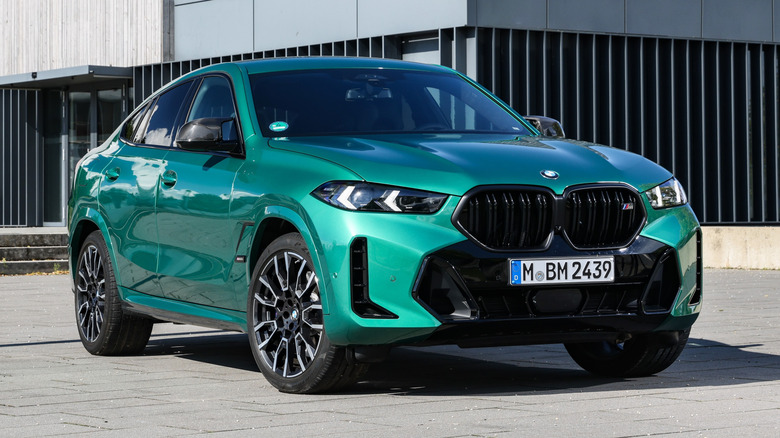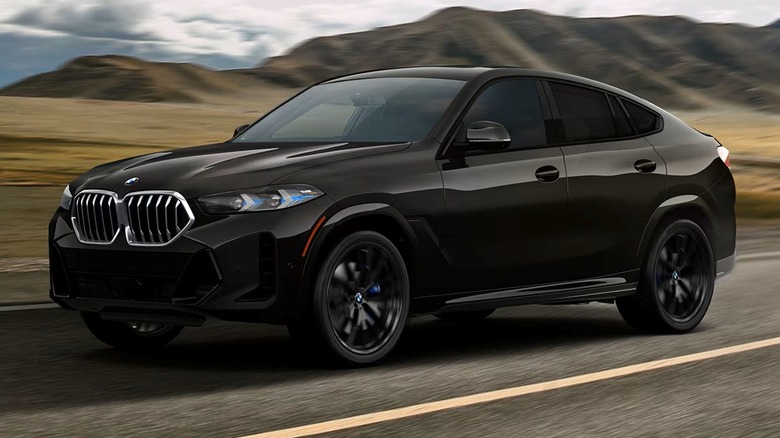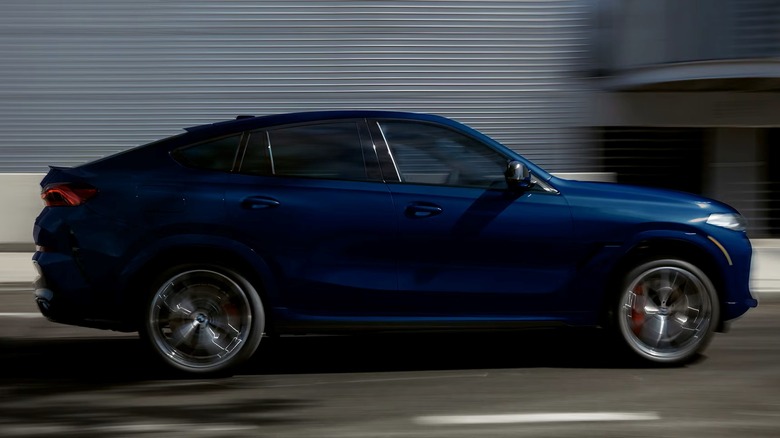How Much Do The BMW X6 Trims Cost & What's The Difference Between Them?
Coupe-style SUVs are a common sight on American roads, but the BMW X6 is the car that started it all. Based on the more traditional BMW X5 SUV, the X6 first arrived on the scene in 2008 with a sleeker styling that fused an SUV body with the sloping roofline typically associated with coupes. Three generations later, the X6 retains this formula, but it's grown into a bigger, meaner luxury crossover SUV with plenty more to give.
The regular 2026 BMW X6 offers two trim options: xDrive40i and M60i. Then there's also the BMW X6 M Competition for those wanting adrenaline-inducing thrill. The xDrive40i is the base-spec X6 model and, accordingly, the least expensive BMW X6 trim to buy new, with pricing starting from $76,275 (including a $1,175 destination and handling fee). The BMW X6 M60i offers a step up in luxury and performance from the X6 xDrive40i model with more sporty and performance-oriented features, even if those additions push the base price up to $96,325.
The higher-performance X6 M Competition is the most expensive X6 variant on the market, priced from $133,275 (including destination and handling charges). Being a full-fledged BMW M model, the great-handling X6 M Competition brings performance improvements thanks to a twin-turbocharged 4.4-liter V8 engine producing 617 horsepower and 553 lb-ft of torque, directed to all four wheels through an eight-speed automatic transmission. That rockets the M car to 60 mph in just 3.7 seconds, on its way to a top speed of 177 mph (with the available M Driver's Package). Here's a look at how the core BMW X6 trims differ from each other.
BMW X6 xDrive40i vs. M60i performance comparison
One of the main differences between the BMW X6 trims is their powertrains, as the BMW X6 xDrive40i and M60i both come with different engines beneath their hoods, and this impacts their performance. The base xDrive40i utilizes a turbocharged 3.0-liter inline six-cylinder, which features 48-volt mild-hybrid technology. It has the capacity to put as much as 375 hp and 398 lb-ft of torque to the ground through an eight-speed automatic transmission, with the 0-60 time taking a manufacturer-estimated 5.2 seconds. While top speed is electronically limited to 130 mph, you can increase that by paying extra for performance tires, which unlock the higher 155 mph speed limiter.
As for fuel economy, the X6 xDrive40i has an average city-highway rating of 24 mpg from the EPA, which is great for a coupe SUV. The M60i, meanwhile, sports a twin-turbo 4.4-liter V8 that develops 523 horsepower and 553 lb-ft of torque. With that, it's capable of 0-60 mph in 4.2 seconds before reaching an electronically limited top speed of 130 mph. As with the xDrive40i, a 155 mph speed limiter is available, with power also reaching the wheels through an eight-speed automatic transmission. The V8 in the M60i returns an EPA-estimated fuel economy of 19 mpg combined.
How does the BMW X6 M60i's equipment differ from the X6 xDrive40i?
Both BMW X6 trims come packed with features that keep occupants connected and make the ride more enjoyable. The xDrive40i has a standard 14.9-inch infotainment system, 12.3-inch digital instrument cluster, a wireless smartphone charger, Apple CarPlay and Android Auto, as well as navigation. You also get 20-inch wheels shod with all-season run-flat tires, a leather-covered steering wheel, heated front seats, memory settings for the driver's seat, synthetic leather upholstery, and quad-zone automatic climate control as standard.
Stepping up to the X6 M60i adds certain features that aren't available on the xDrive40i right out of the box. These include ventilated front seats, head-up display, a sport steering wheel, sport exhaust, high-performance brakes, and a sportier-looking exterior. And, while both SUVs seek to make driving comfortable with standard adaptive dampers, you should find the X6 M60i easier to maneuver through tight, busy streets at low speeds due to its four-wheel steering system — something the X6 xDrive40i also lacks in standard configuration.


